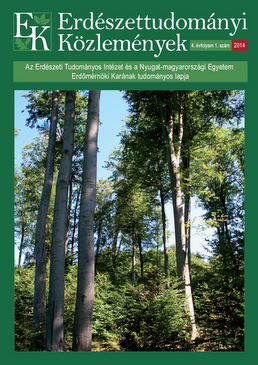Correlation between stand structure, understory vegetation and macrofungi in a submontane beech selection forest stand
Dénes Molnár, Ádám Folcz, Norbert Frank & Gergely Király
Correspondence
Correspondence: Molnár Dénes
Postal address: H-9400 Sopron, Ady Endre u. 5.
e-mail: hellovarius[at]emk.nyme.hu
Abstract
The paper presents and discusses the relations of stand structure, richness of the herb layer and macrofungi occurrences in a submontane beech selection forest stand. Due to the selection system, the associate tree species are lacking in younger age classes, and the stand progressively develops to a pure beech forest. Ratio of coarse-limbed trees is significantly higher than in the case of a traditional rotation system. The understory vegetation is dominated by forest herbs, whereas role of non-forest weeds and invaders is neglilible. In case of increasing canopy cover the number and the cover of herbs tends to decrease; however, the reduction rate of forest herbs is significantly smaller. The microhabitat-rich stand structure and the remarkable deadwood proportion favour the occurrence of macrofungi.
Keywords: submontane beech forest, selection system, stand structure, herb layer, macrofungi
Open Acces
For non-commercial purposes, let others distribute and copy the article, and include in a collective work, as long as they cite the author(s) and the journal, and provided they do not alter or modify the article.
Cite this article as:
Molnár, D., Folcz, Á., Frank, N. & Király, G. (2014): Correlation between stand structure, understory vegetation and macrofungi in a submontane beech selection forest stand. Bulletin of Forestry Science, 4(1): 37-46. (in Hungarian)
Volume 4, Issue 1
Pages: 37-46
First published:
15 July 2014
Related content
5
More articles
by this authors
8
Related content in the Bulletin of Forestry Science*
More articles by this authors in the Bulletin of Forestry Science
(Forest reproductive materials production after the 2nd world war). Bulletin of Forestry Science, 10(1): 55-66.
* Automatically generated recommendations based on the occurrence of keywords given by authors in the titles and abstracts of other articles. For more detailed search please use the manual search.
